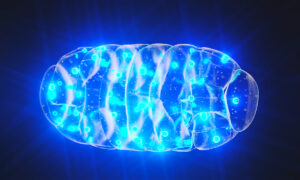Overview
Creutzfeldt-Jakob (KROITS-felt YAH-kobe) disease is a degenerative brain disorder that leads to dementia and, ultimately, death. Symptoms of Creutzfeldt-Jakob disease (CJD) can resemble those of other dementia-like brain disorders, such as Alzheimer’s. But Creutzfeldt-Jakob disease usually progresses much more rapidly.
CJD captured public attention in the 1990s when some people in the United Kingdom developed a form of the disease — variant CJD (vCJD) — after eating meat from diseased cattle. However, “classic” Creutzfeldt-Jakob disease hasn’t been linked to contaminated beef.
Although serious, CJD is rare, and vCJD is the least common form. Worldwide, there is an estimated one case of CJD diagnosed per million people each year, most often in older adults.
Symptoms
Creutzfeldt-Jakob disease is marked by rapid mental deterioration, usually within a few months. Initial signs and symptoms typically include:
- Personality changes
- Anxiety
- Depression
- Memory loss
- Impaired thinking
- Blurred vision or blindness
- Insomnia
- Difficulty speaking
- Difficulty swallowing
- Sudden, jerky movements
As the disease progresses, mental symptoms worsen. Most people eventually lapse into a coma. Heart failure, respiratory failure, pneumonia or other infections are generally the cause of death. Death usually occurs within a year.
In people with the rarer vCJD, psychiatric symptoms may be more prominent in the beginning, with dementia — the loss of the ability to think, reason and remember — developing later in the illness. In addition, this variant affects people at a younger age than classic CJD does and appears to have a slightly longer duration — 12 to 14 months.
Causes
Creutzfeldt-Jakob disease and its variants belong to a broad group of human and animal diseases known as transmissible spongiform encephalopathies (TSEs). The name derives from the spongy holes, visible under a microscope, that develop in affected brain tissue.
The cause of Creutzfeldt-Jakob disease and other TSEs appears to be abnormal versions of a kind of protein called a prion. Normally these proteins are harmless. But when they’re misshapen, they become infectious and can harm normal biological processes.
How CJD is transmitted
The risk of CJD is low. The disease can’t be transmitted through coughing or sneezing, touching, or sexual contact. The three ways it develops are:
- Sporadically. Most people with classic CJD develop the disease for no apparent reason. Termed spontaneous CJD or sporadic CJD, this type accounts for the majority of cases.
- By inheritance. Fewer than 15 percent of people with CJD have a family history of the disease or test positive for a genetic mutation associated with CJD. This type is referred to as familial CJD.
- By contamination. A small number of people have developed CJD after being exposed to infected human tissue during a medical procedure, such as a cornea or skin transplant. Also, because standard sterilization methods do not destroy abnormal prions, a few people have developed CJD after undergoing brain surgery with contaminated instruments.Cases of CJD related to medical procedures are referred to as iatrogenic CJD. Variant CJD is linked primarily to eating beef infected with mad cow disease (bovine spongiform encephalopathy, or BSE).
Risk factors
Most cases of Creutzfeldt-Jakob disease occur for unknown reasons, and no risk factors can be identified. However, a few factors seem to be associated with different kinds of CJD.
- Age. Sporadic CJD tends to develop later in life, usually around age 60. Onset of familial CJD occurs slightly earlier and vCJD has affected people at a much younger age, usually in their late 20s.
- Genetics. People with familial CJD have a genetic mutation that causes the disease. The disease is inherited in an autosomal dominant fashion, which means you need to inherit only one copy of the mutated gene, from either parent, to develop the disease. If you have the mutation, the chance of passing it on to your children is 50 percent.Genetic analysis in people with iatrogenic and vCJD suggest that inheriting identical copies of certain variants of the prion gene may increase your risk of developing CJD if you’re exposed to contaminated tissue.
- Exposure to contaminated tissue. People who’ve received human growth hormone derived from human pituitary glands or who’ve had grafts of tissue that covers the brain (dura mater) may be at risk of iatrogenic CJD.The risk of contracting vCJD from eating contaminated beef is difficult to determine. In general, if countries are effectively implementing public health measures, the risk is virtually nonexistent.
Complications
As with other causes of dementia, Creutzfeldt-Jakob disease profoundly affects the brain as well as the body, although CJD and its variants usually progress much more rapidly. People with CJD usually withdraw from friends and family and eventually lose the ability to recognize or relate to them. They also lose the ability to care for themselves and many eventually slip into a coma. The disease ultimately is fatal.
Prevention
There is no known way to prevent sporadic CJD. If you have a family history of neurological disease, you may benefit from talking with a genetics counselor, who can help you sort through the risks associated with your situation.
Preventing iatrogenic CJD
Hospitals and other medical institutions follow explicit policies to prevent iatrogenic CJD. These measures have included:
- Exclusive use of synthetic human growth hormone, rather than the kind derived from human pituitary glands
- Destruction of surgical instruments used on the brain or nervous tissue of someone with known or suspected CJD
- Single-use kits for spinal taps (lumbar punctures)
To help ensure the safety of the blood supply, people with a risk of exposure to CJD or vCJD aren’t eligible to donate blood in the United States. This includes people who:
- Have a biological relative who has been diagnosed with CJD
- Have received a dura mater brain graft
- Have received human growth hormone
- Spent at least three months in the United Kingdom from 1980 to 1996
- Spent five years or more in Europe since 1980
- Have lived at United States military bases located in Northern Europe for at least six months from 1980 to 1990, or in other locations in Europe from 1980 to 1996
- Received a blood transfusion in the U.K. or France since 1980
- Have injected bovine insulin since 1980
The U.K., as well as some other countries, also has certain restrictions regarding blood donations from people with a risk of exposure to CJD or vCJD.
Preventing vCJD
The risk of contracting vCJD in the United States remains extremely low. Only three cases have been reported in the U.S. According to the Centers for Disease Control and Prevention, strong evidence suggests that these cases were acquired abroad — two in the United Kingdom and one in Saudi Arabia.
In the United Kingdom, where the majority of vCJD cases have occurred, fewer than 200 cases have been reported. CJD incidence peaked between 1999 and 2000 and has been declining since.
A very small number of other vCJD cases have been reported in other countries worldwide.
Regulating potential sources of vCJD
Most countries have taken steps to prevent BSE-infected tissue from entering the food supply, including:
- Tight restrictions on importation of cattle from countries where BSE is common
- Restrictions on animal feed
- Strict procedures for dealing with sick animals
- Surveillance and testing methods for tracking cattle health
- Restrictions on which parts of cattle can be processed for food









